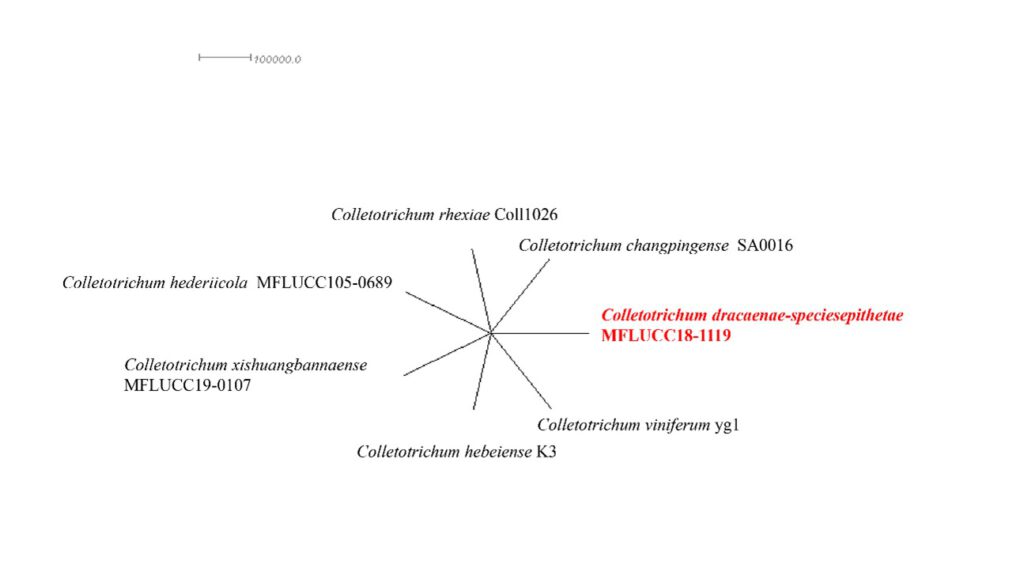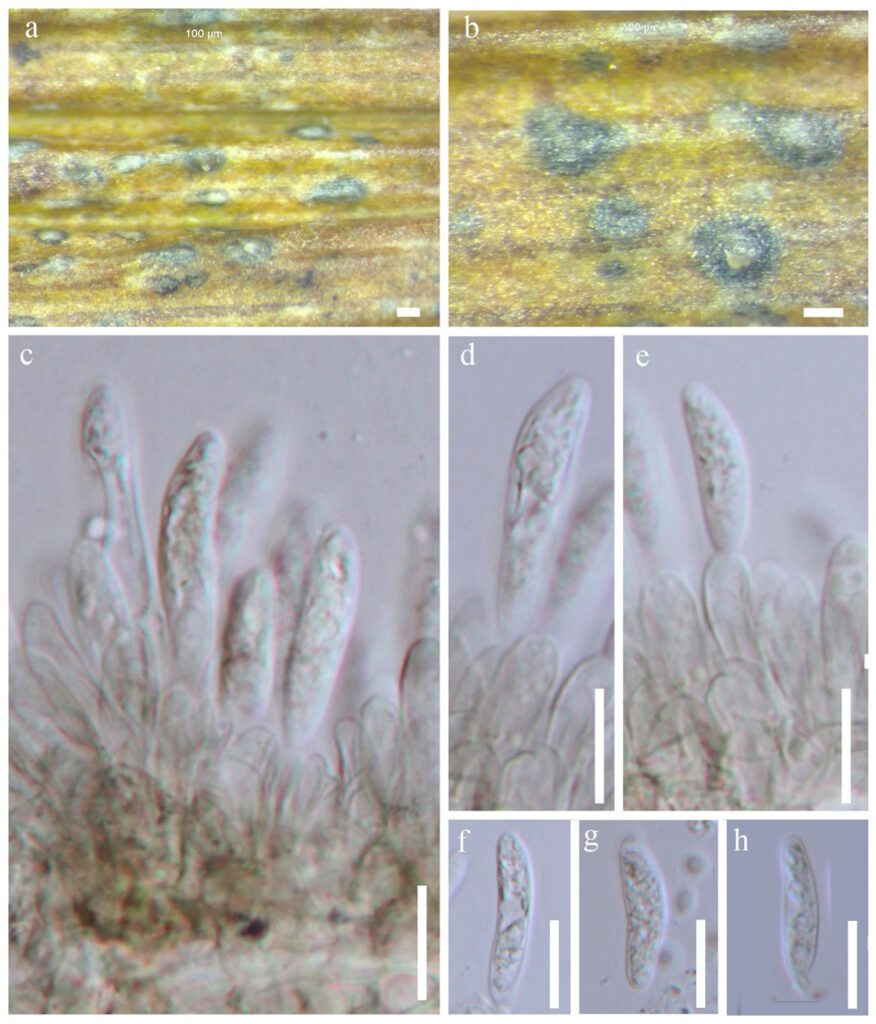Colletotrichum dracaenae-speciesepithetae Chaiwan & K.D. Hyde, sp. nov.
MycoBank number: MB; Index Fungorum number: IF; Facesoffungi number: FoF 12773, Fig. **.
Etymology – The specific epithet reflects the host Dracaena sp.
Holotype – living culture MFLUCC 18–1119.
Saprobic on dead leaves of Dracaena sp. Sexual morph: Undetermined. Asexual morph: Conidiomata acervular, conidiophores formed on a cushion of roundish and medium brown cells. Setae not observed. Conidiophores hyaline to pale brown, smooth walled, septate, branched. Conidiogenous cells hyaline, smooth-walled, subcylindrical, straight to curved, 5.5–17.5 μm, apex 1–2 μm diam. Conidia 10–20 × 3–5 µm, mean (n = 40), hyaline, aseptate, smooth-walled, cylindrical to clavate, both ends bluntly rounded, 1–3-guttulate, contents granular. Appressoria not observe.
Material examined – Thailand, Ratchaburi Province, Pak Tho District, on Dracaena sp., 30 September 2017, Saranyaphat Boonmee, SBRBR4 (ex-type living culture, MFLUCC 18–1119).
GenBank accession numbers – ITS:OM988429; ACT:OP080328; CHS:OP080330; GAPDH:OP080329.
Notes – Base on our phylogenetic analysis this species belongs to the C. gloeospoioides species complex. In a BLASTn search of GenBank, the ITS sequence had 99.46% similarity with C. siamense, the TUB sequence had 88.12% similarity with C. siamense, the ACT sequence had 99.19% similarity with C. siamense while the GAPDH sequence had 100% similarity with C. siamense. Thus, our strain is introduced as a new species of C. dracaenae-speciesepithetae from Dracaena sp. in Thailand. In addition, we test closely related species with our new species in the PHI test. The result shows P=0.9608 which means no significance of our data set and it is new species (Fig.29). With phylogenetic support we introduce our isolate as a new species of Dracaena sp. from Thailand.

Figure 29 – Results of the pairwise homoplasy index (PHI) test of closely related species using both LogDet transformation and splits decomposition. PHI test results (Φw) < 0.05 indicate significant recombination within the dataset. The new taxon is in red bold type.

Figure 30 – Colletotrichum dracaenae-speciesepithetae (MFLUCC 18–1119). a, b Fruiting body on dead leaf of Dracaena sp. c–e Conidiogenous cells f–h Conidia. Scale bars: a, b 100 μm, c–h = 10 μm.
